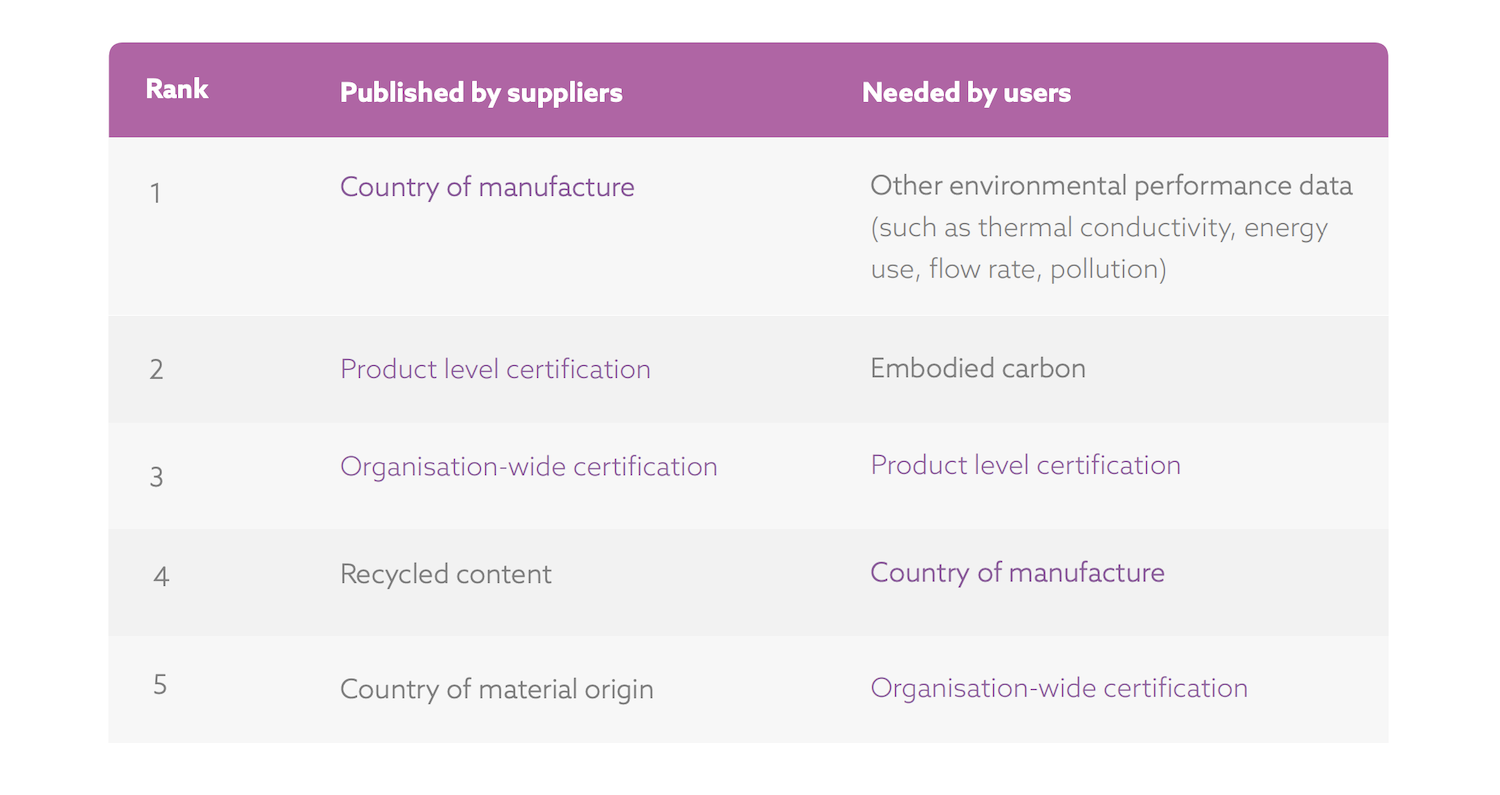
Carbon data: are you getting enough?
Consultants, designers and specifiers want more sustainability data from product manufacturers, according to a new survey from NBS.

Users of construction product information want more information on products’ sustainability performance, according to the results of the NBS Sustainable Futures UK Report 2024, published this week. However, there’s a disconnect between the information that most manufacturers supply and the information that most users want.
The vast majority (88%) of the 568 respondents to the NBS survey were from the UK and nearly two-thirds (61%) were consultants, designers and specifiers.
Specification and product information are considered key in enabling sustainable outcomes. More than 90% of the respondents (excluding suppliers) agreed that a robust specification is important to achieving sustainable outcomes. A similar percentage also agreed that more manufacturers needed to provide sustainable performance information about products and materials.
The survey results suggest that specifiers will choose sustainable alternatives, with almost half (46%) only specifying or choosing a named manufacturer if they have declared better-than-average sustainability credentials.
The disconnect

The table above tells the story of the disconnect between manufacturers and users. The ranking on the right is the information users most commonly look for when working on a sustainable project. The ranking on the left is the list of information that manufacturers publish. The two types of information most commonly cited by users do not appear on the manufacturers’ ranking.
The NBS report also digs into Environmental Performance Declarations (EPDs). There are six stages/categories of data, and NBS asked information users which are most useful (see graphic below). The product stage (A1 to A3), which relates to materials sourcing, transport to factory and manufacture, was the stage that respondents ranked as most useful. It was closely followed by the use stage (B1 to B7), which includes maintenance and operational energy, and construction (A4 to A5), including transport to site and installation. This might indicate that a shift is happening towards prioritising embodied carbon alongside operational carbon, NBS suggests.

Lee Jones, head of sustainability at NBS, said: “The results of the report reflect something we’re seeing more and more in practice – a real appetite among specifiers for meaningful, actionable sustainability data. But the stats are clear: if environmental data is vague or incomplete, it doesn’t support decision-making at pace.
“If we want sustainable choices to become the default, we have to make those choices easier to identify and compare. That means standardising how data is shared, improving transparency, and focusing on the metrics that will matter most in the coming years.”
Keep up to date with DC+: sign up for the midweek newsletter.



